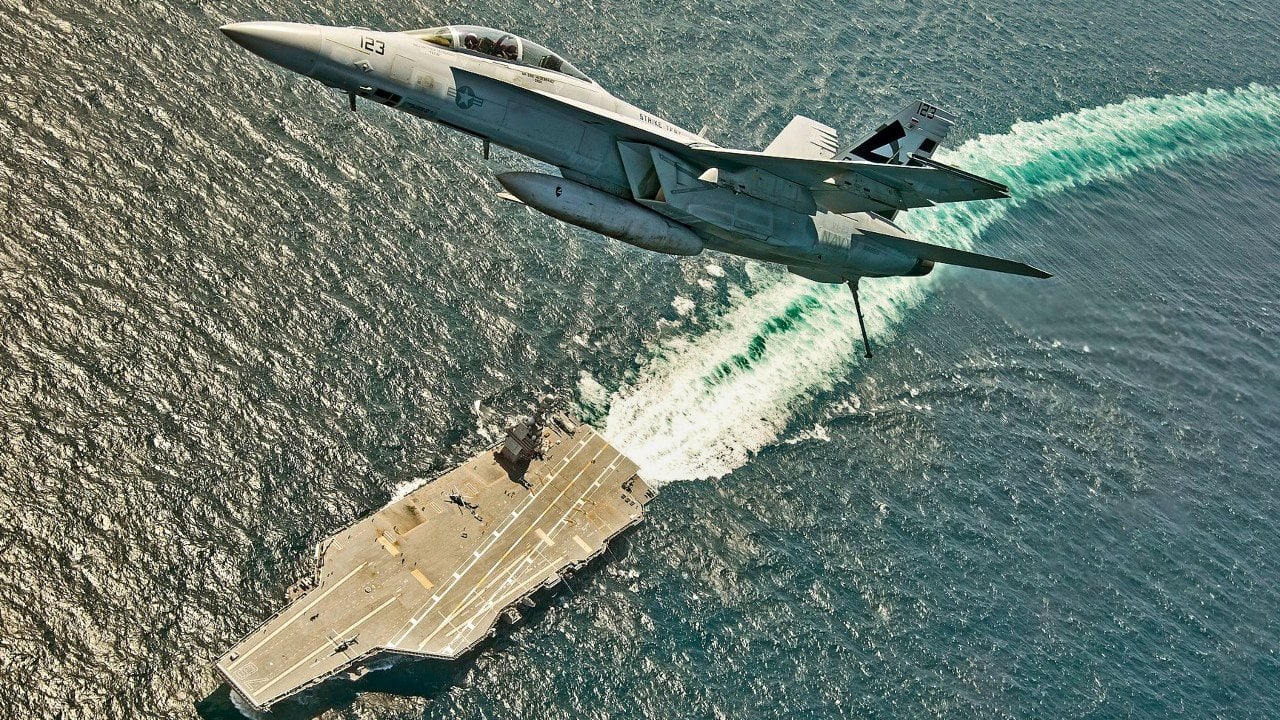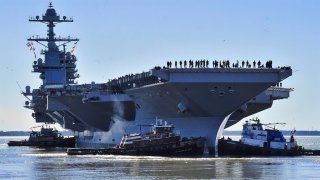Don't Ask the Navy This: Is $120 Billion for New Aircraft Carriers Worth It?
The U.S. Navy is modernizing its fleet with the Ford-class aircraft carrier, the most advanced and expensive warship ever built, costing $13 billion per unit and totaling $120 billion for the program.
All You Need to Know: The U.S. Navy is modernizing its fleet with the Ford-class aircraft carrier, the most advanced and expensive warship ever built, costing $13 billion per unit and totaling $120 billion for the program.
-While the Ford-class offers significant upgrades, including a 33% higher Sortie Generation Rate due to innovations like the EMALS catapult system, questions arise about its necessity and cost-effectiveness.
-With the U.S. already possessing more aircraft carriers than any other nation, some experts argue that fewer carriers or upgrades to existing Nimitz-class ships might suffice.
-The debate centers on whether the massive investment in the Ford-class is justified amid current defense needs and budget considerations.
The Ford-Class Aircraft Carrier Debate
The US Navy, like all branches of the US military, is constantly updating their inventory.
And with the specter of conflict with China, a near-peer rival, looming in the minds of war planners, the US military is considering updates more urgently.
In the Navy, updates are happening across the lineup, from submarines to drones to fighter aircraft to the cornerstone of the fleet – the aircraft carrier.
Today, the US Navy has eleven supercarriers, far more than any other nation on Earth. But ten of the eleven carriers are Nimitz-class carriers, which are no longer on the cutting edge of carrier technology, thanks to the newly emerged Ford-class, of which the US has one commissioned.
The Ford-class is the most expensive warship ever built in the history of human warfare. At $13 billion per unit, each individual ship represents a considerable investment – even for a resource-rich superpower like the United States.
And while each Ford-class costs $13 billion, the price tag represents just a fraction of the program’s total cost of $120 billion.
Whenever you charge your taxpayers $120 billion, you’re going to face some scrutiny. You’re going to raise important questions, like, is this expense worth it?
So, is the Ford-class worth the price?
Aircraft Carrier Questions: What does $13 billion get you?
The $13 billion price tag does get the taxpayer a modern and sophisticated aircraft carrier, indeed, the most modern and most sophisticated aircraft carrier ever built. The Ford is impressive thanks to a slew of updated features and performance metrics.
Most importantly, perhaps, the Ford can generate an impressive Sortie Generation Rate (SGR), 33 percent higher than the preceding Nimitz-class. The SGR gets to the heart of the aircraft carrier’s sole purpose: projecting airpower around the world.
Essentially, an aircraft carrier is a floating, movable airfield that can be positioned roughly anywhere at a moment’s notice, and to be effective, an aircraft carrier must be able to launch aircraft efficiently. The SGR is a metric measuring the rate at which aircraft are launched.
Fortunately, thanks to a variety of updates, most especially the replacement of the traditional steam catapult with the new EMALS catapult, the Ford has a phenomenal SGR; the Ford is expected to produce 160 sorties per day (and up to 270 in a wartime push).

Considering the US Defense Budget
$13 billion gets you a remarkable aircraft carrier. But the question – is the Ford-class worth the price – persists.
Even without the Ford, the US has far more carriers than any other nation on earth. How many is too many? Barry Posen, writing in Restraint, argued that seven aircraft carriers would be sufficient to maintain the US’s grand strategy and to fight in two conflicts simultaneously. If we accept Posen’s analysis – which is debatable, but in my perspective, reasonable – then the US has four more aircraft carriers than needed.
Even if the US had fewer aircraft carriers, one could argue that those aircraft carriers should be top of the line. Well, technically, the Nimitz was top of the line – without rival anywhere in the world – until the Ford-class was unveiled. Granted, staying ahead of the competition is prudent; preparing for future needs is prudent.
The Nimitz-class carriers can’t sail forever and will eventually need to be replaced. Is that day today? And does the replacement need to be a $120 billion program? These are important questions.
About the Author: Harrison Kass
Harrison Kass is a defense and national security writer with over 1,000 total pieces on issues involving global affairs. An attorney, pilot, guitarist, and minor pro hockey player, Harrison joined the US Air Force as a Pilot Trainee but was medically discharged. Harrison holds a BA from Lake Forest College, a JD from the University of Oregon, and an MA from New York University. Harrison listens to Dokken.
Image Credit: Creative Commons.


